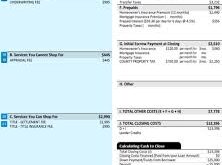Mortgage Refinancing Explained: Lowering Your Loan Costs. Mortgage refinancing is a financial strategy that allows homeowners to replace their existing home loan with a new one, often with better terms. Whether you want to reduce your interest rate, shorten your loan term, or access home equity, refinancing can provide significant benefits. However, understanding the process, costs, and potential drawbacks is essential to making the right decision.
In this article, we will explain mortgage refinancing in detail, covering the different types, benefits, and risks, as well as practical tips for securing the best deal.
What Is Mortgage Refinancing?
Mortgage refinancing involves taking out a new loan to pay off an existing mortgage. This new loan typically has different terms, such as a lower interest rate, a different repayment period, or a change in loan type (e.g., switching from an adjustable-rate mortgage to a fixed-rate mortgage).
Types of Mortgage Refinancing
1. Rate-and-Term Refinance
This type of refinance changes the interest rate and/or term of the mortgage without altering the loan amount. It is popular among homeowners looking to lower their monthly payments or pay off their mortgage sooner.
2. Cash-Out Refinance
A cash-out refinance allows homeowners to borrow more than they owe on their current mortgage, using the equity in their home. The extra cash can be used for home improvements, debt consolidation, or other financial needs.
3. Cash-In Refinance
With a cash-in refinance, the homeowner makes a lump sum payment towards the loan principal to reduce the loan amount and secure better terms.
4. Streamline Refinance
Certain government-backed loans, such as FHA or VA loans, offer streamline refinancing, which requires less paperwork and fewer credit checks, making the process quicker and easier.
Benefits of Mortgage Refinancing
1. Lower Interest Rates
One of the primary reasons homeowners refinance is to secure a lower interest rate, which can result in significant savings over time.
2. Reduced Monthly Payments
By securing a lower rate or extending the loan term, monthly mortgage payments can be reduced, freeing up funds for other financial priorities.
3. Shorter Loan Term
Switching from a 30-year mortgage to a 15-year loan can help homeowners pay off their mortgage faster and save on interest.
4. Access to Home Equity
A cash-out refinance allows homeowners to convert home equity into cash for various purposes, such as home renovations, education, or investment.
5. Switching Loan Types
Homeowners with adjustable-rate mortgages (ARMs) may refinance to a fixed-rate mortgage to secure predictable payments.
Potential Risks of Mortgage Refinancing
1. Closing Costs
Refinancing comes with fees such as origination fees, appraisal costs, and closing costs, which can reduce potential savings.
2. Extended Loan Term
Lower monthly payments often mean extending the loan term, which could result in higher overall interest payments.
3. Risk of Foreclosure
If homeowners struggle to make new mortgage payments after refinancing, they risk foreclosure.
4. Impact on Credit Score
Applying for refinancing can temporarily lower a credit score due to the lender’s credit inquiry.
How to Qualify for Mortgage Refinancing
- Good Credit Score: A higher credit score increases the chances of securing a lower interest rate.
- Stable Income: Lenders require proof of steady income to ensure repayment ability.
- Sufficient Home Equity: More equity increases refinancing options and reduces loan costs.
- Debt-to-Income Ratio: A lower ratio makes approval more likely.
10 Tips for Successful Mortgage Refinancing
- Check your credit score before applying.
- Compare multiple lenders to find the best rate.
- Calculate break-even points to ensure savings.
- Consider loan terms that align with your financial goals.
- Avoid cash-out refinancing unless necessary.
- Watch out for hidden fees and prepayment penalties.
- Maintain a stable income and employment history.
- Ensure your home’s value justifies refinancing.
- Lock in the best interest rate when available.
- Work with a trusted mortgage broker for expert guidance.
10 Frequently Asked Questions (FAQs) About Mortgage Refinancing
1. When should I refinance my mortgage?
If interest rates have dropped significantly, or you need to change loan terms, refinancing may be beneficial.
2. How much does it cost to refinance a mortgage?
Costs vary but typically range from 2% to 5% of the loan amount.
3. Can I refinance with bad credit?
It may be possible, but expect higher interest rates or the need for a co-signer.
4. How long does refinancing take?
The process usually takes 30-45 days but can vary depending on the lender.
5. Will refinancing affect my credit score?
Yes, a credit inquiry and a new loan application can temporarily lower your score.
6. Is cash-out refinancing a good idea?
It depends on your financial needs. It can provide funds but increases your loan balance.
7. Can I refinance multiple times?
Yes, but consider costs and benefits before refinancing repeatedly.
8. What happens if I move after refinancing?
You can still sell your home, but factor in closing costs and potential penalties.
9. Should I refinance with my current lender?
Your current lender may offer a good deal, but compare with other lenders first.
10. Is mortgage refinancing tax-deductible?
Interest paid on the new loan may be tax-deductible, but consult a tax advisor for details.
Conclusion
Mortgage refinancing is a powerful financial tool that can lower your interest rates, reduce monthly payments, and provide access to home equity. However, it is essential to consider costs, loan terms, and your financial goals before refinancing.
By understanding the refinancing process, comparing lenders, and evaluating your financial situation, you can make an informed decision that maximizes savings and secures long-term financial stability.
 mortgage.kbk.news
mortgage.kbk.news
